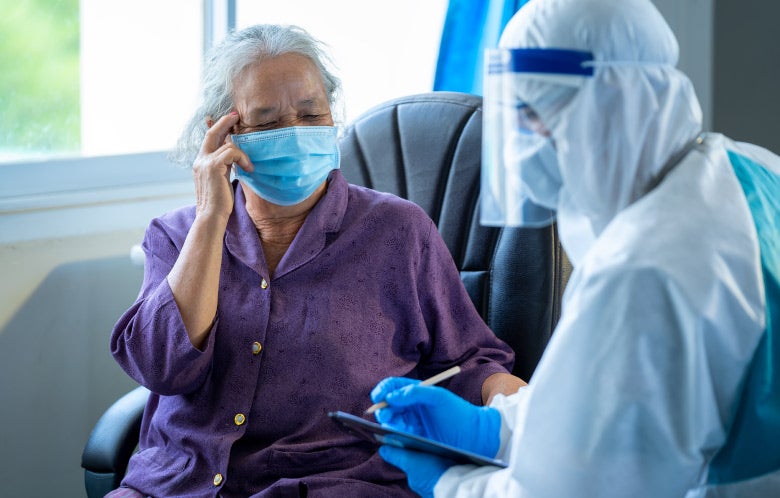Chronic rhinosinusitis plagues as many as 12 percent of adults, resulting in bothersome symptoms such as congestion and loss of smell. Medical therapy with intranasal corticosteroids, saline rinses, and intermittent oral antibiotic or steroid use has variable effectiveness. One in five individuals with chronic rhinosinusitis has nasal polyps (CRSwNP). For patients with ongoing symptoms, endoscopic sinus surgery has become increasingly popular despite limited evidence of effectiveness from observational studies and a high rate of recurrence and revision.
Investigators in the Netherlands conducted an unblinded, randomized trial to compare endoscopic sinus surgery plus medical therapy to medical therapy alone in 234 adults with CRSwNP presenting to their otolaryngologist. Medical therapy was left to the discretion of the treating otolaryngologist and included typical intranasal therapy and intermittent systemic antibiotics and/or glucocorticoids. Disease-specific quality of life, as rated by the mean Sino-Nasal Outcome Test-22 (SNOT-22) score (range 0-110, higher scores being worse) was similar at baseline (51.9 vs. 50.5 in endoscopic sinus surgery versus medical group, respectively). In the endoscopic sinus surgery group, 90 percent of participants underwent sinus surgery and were included in final analysis (n=109). In the medical therapy group, 21 percent (23/110) crossed over into the endoscopic sinus surgery arm of trial.
In an intention to treat analysis at 12 months of follow-up, there was a statistically significant improvement in mean SNOT-22 score in the endoscopic sinus surgery group compared with the medical therapy alone group (27.9 vs. 31.1, adjusted mean difference -4.9, 95% CI -9.4 to -0.4 favoring endoscopic sinus surgery). This did not meet the prespecified minimal clinically important difference of nine points. Rates of most bothersome symptoms, including anosmia and postnasal drip, were similar at 12 months. In a safety analysis, there were three serious adverse events, including one stroke shortly after surgery, one cardiac arrest immediately postoperatively, and two orbital wall injuries in the endoscopic sinus surgery group. There was one myocardial infarction over the 12 months in the medical therapy group. Rates of antibiotic prescription were similar between groups, but fewer total systemic steroids were prescribed in the endoscopic sinus surgery group as compared with the medical therapy group (265.5 mg vs. 589 mg, respectively).
At first glance, this trial appears to demonstrate that endoscopic sinus surgery improves quality of life related to sinus disease at 12 months, but the magnitude of benefit for endoscopic sinus surgery appears very small relative to the potential risks. This includes the risk to the surgeon as endoscopic sinus surgery is the most common reason for malpractice claims against otolaryngologists. This trial highlights the importance of setting and sticking to a prespecified minimal clinically important difference. A five-point difference on a 110-point scale often means very little. In an as-treated analysis to account for the relatively high rate of crossover, the difference in SNOT-22 scores was only 5.8 points in favor of endoscopic sinus surgery. Additionally, all surgeries represent a risk, as evidenced by the perioperative complications in the endoscopic sinus surgery arm of the trial. Based on the body of available evidence on this topic, it may be best to just keep rinsing.
For more information, see the topic Chronic Rhinosinusitis in DynaMed®.


